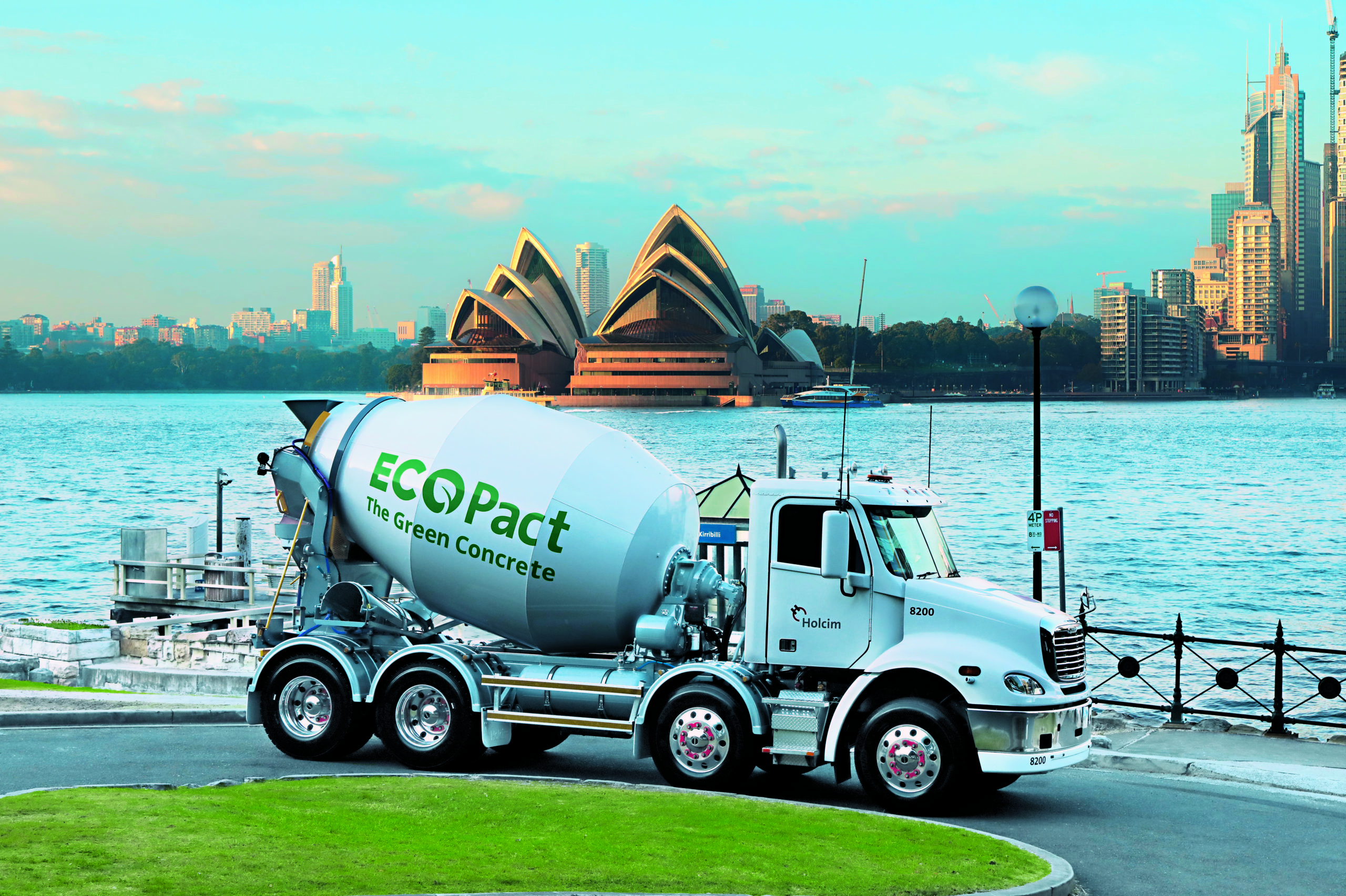Solidifying a Sustainable Concrete Industry

Whether you’re entering a building, crossing a parking lot, walking down the sidewalk or simply driving down the road, concrete is a part of our everyday lives whether we take notice or not.
Like many other industries, the concrete industry—one of the main producers of carbon dioxide (CO2)—is seeking innovative solutions for improving its effect on the planet. Concrete recycling, for example, is the process of reusing rubble materials from demolished concrete sites and structures.
Holcim, a building and construction materials company, is placing big bets on leading in sustainability in this sector, “making cities greener” with its low-carbon green cement and concrete products.
Note, while cement and concrete are often used interchangeably, cement is actually just one component of concrete.
Holcim has identified a way to keep the concrete industry thriving while also remaining environmentally friendly.
“We are making cities greener with our low-carbon materials, from ECOPact green concrete to ECOPlanet green cement,” Holcim Chairman Beat Hess said in the company’s Integrated Annual Report 2021. “We are empowering smarter infrastructure, from green mobility to renewable energy. We are working to improve living standards for all with affordable housing.”

Copyright Holcim Ltd. Photographer: Henrik Spohler
With a higher demand for sustainable construction solutions, Holcim is helping address resource scarcity and climate change issues.
“Driving circular construction, we are recycling materials across our business to minimize waste and preserve nature’s resources,” Hess said.
Holcim recycled 54 million tons of waste across its business in 2021, and the company expects to double this number to 100 million tons by 2030, according to Holcim’s 2021 Sustainability Performance Report. The company’s recycled content in cement increased to 24% last year, significantly inching closer to its goal of 30% by 2030.
“Cement, ready-mix concrete and aggregates are integral to our strategy and vision,” CEO Jan Jenisch said in the Integrated Annual Report. “On our net-zero journey, we are committed to leading [cement and concrete’s] green transformation.”

Copyright Holcim Ltd. Photographer: Henrik Spohler
Holcim’s green concrete ECOPact and green cement ECOPlanet offer a “30% lower carbon footprint compared to standard and local materials and can go all the way to carbon neutral,” he added.
“ECOPact concrete is sold at a range of low-carbon levels, from 30% to 100% less carbon emissions compared to standard (CEM I) concrete,” Holcim stated on its website. “Where regulatory conditions allow, ECOPact+ concrete integrates upcycled construction and demolition materials, further closing the resource loop to reduce the environmental footprint. ECOPact ZERO offsets and compensates unavoidable process-related CO2 emissions.”
Released in July 2020, ECOPact is now offered worldwide.
Holcim aims to lead the transition to more sustainable building materials, and its green cement and concrete products take that step forward toward greener construction. Jenisch said in the report that Holcim will continue investing in low-carbon raw materials to expand the company’s green product formulation, including but not limited to calcined clay, carbonated olivine, recycled construction and demolition waste.
Susteno, another one of the company’s green cement options, offers 20% recycled construction and demolition waste inside. Released in 2019 in Switzerland, Susteno reduces CO2 in cement and buildings.
“Susteno reduces the clinker content of the cement and therefore its CO2 by 10% compared to an already CO2-optimized Swiss mass cement,” Holcim stated on its website. “Clinker is the most CO2-intensive component of cement with roughly two-thirds of CO2 emitted as a result of the chemical reaction in the manufacturing process. This means that the most meaningful way to reduce CO2 emissions of cement is by replacing clinker with mineral components. Since common substitute materials like fly ash and slag are not available in Switzerland, Holcim invented alternative local solutions.”
According to the company, Susteno saved more than 7,000 tons of CO2 in 2019.
“This is just the beginning, and we know we can go much further,” Jenisch said of Susteno. “I’m excited about the many opportunities ahead to scale up circular solutions that are good for people and the planet.”


Leave a Reply